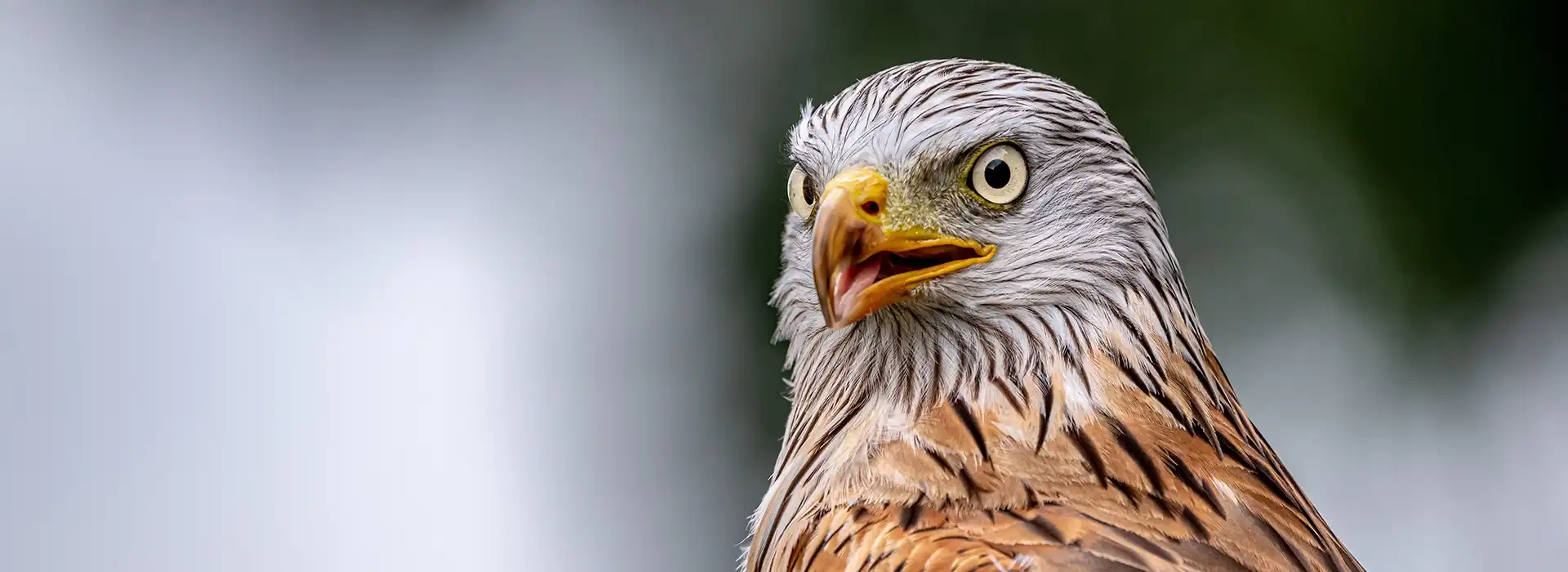
The sight of a Red Kite, or two, or three, gently soaring over our countryside is now, once more, a familiar thing. The reintroduction of this species to Britain must rate as one of the conservation success stories of the modern era. Once a common bird over much of the country, even haunting the litter-ridden and filthy streets, Red Kites were seen as disease-carrying vermin and bounties were paid for their carcasses. The population retreated, finding a final refuge in the valleys of central Wales. A handful of breeding pairs hung on. In 1989, six Swedish birds were released at a site in Scotland and a further four birds were released in the Chilterns.
Key Facts
Common name: Red Kite
Scientific name: Milvus milvus
Habitat: Mixed, open countryside with the main requirement being broad-leaved wooded areas.
Diet: Carrion, small mammals and birds, reptiles, amphibians and earthworms
Size: Average 63cm, wingspan 185cm. Females (1.2kg) somewhat larger than males (1kg)
Status: Resident and reintroduced/introduced breeding bird. Passage visitor
Population size: 4,400 pairs
Conservation status: GREEN (least concern). Rare breeding bird, having suffered drastic long-term decline, but now common after multiple successful introductions.
Appearance
Red Kites are extremely long-winged and long-tailed and very large, with slightly larger bodies and much longer wings than a Buzzard. They are predominantly rufous red, with dark wing tips and pale outer wings. The head is pale, with older birds developing almost white heads, and the long, red tail is deeply forked and used as a stabiliser in flight, twisting back and forth – a characteristic clue to the Red Kite’s identity.
Lifespan
Average in the wild of 4 years. Adults have an 61% year-to-year survival. About half of all juveniles will survive their first year. The oldest known wild bird was almost 24 years old (ringing recovery).
Nesting
Nests are usually built high up in a tree, in a fork. Red Kites build their own nest but on occasion will take over an old Buzzard nest. Twigs and sticks continue to be added to the nest during the breeding season, and nests are often reused in subsequent years with some well-used nests becoming very large. The nest cup is lined with grass and often wool, but Red Kites are known for decorating their nests with man-made objects. Plastic bags and brightly coloured plastic items are gathered, and items of clothing have been known to be acquired for the nest.
Number of eggs: 2
Incubation: 31-32 days
Fledging time: 50-60 days
Distribution and Habitat
Now found across much of the country, the distribution map still shows obvious concentrations around reintroduction areas, such as the Chilterns, Northamptonshire, North Yorkshire, southern Scotland, the Black Isle and, more recently, eastern Ireland. The traditional and last remaining original population of Red Kites, in central Wales, has now spread into much of Wales, and into Shropshire and Herefordshire. In winter, birds wander further, and they are now a familiar sight along many of our roads. Kites are fairly catholic in their habitat requirements, although they prefer mixed, open countryside with the main requirement being broad-leaved wooded areas. In the winter months they can be seen gathering in large numbers to roost together in the tops of trees.
Movements
Once adult, Red Kites in the UK are fairly sedentary, but as youngsters in their first two years before breeding kites will often wander large distances and can turn up anywhere. Being sedentary is unusual in a species that across its range is migratory, and northern continental birds are regular in the east of the UK in winter.
Red Kites are found across much of northern Europe and into Iberia in the southwest and Russia in the east. Only populations from the western part of the range are resident, those from further east are migratory and one of the challenges for the reintroduction programme was to source birds from a non-migratory population to ensure a similar lifestyle to the previous British kites. Most of the Chilterns birds were sourced from the sedentary and common Spanish population for this reason, although birds for the later, more northerly reintroductions have often been sourced from the thriving Swedish population.
Feeding
Red Kites are renowned as scavengers and are frequently seen along roads, where they target roadkill. Other, larger, animals will attract kites, but they will also take live prey. Small mammals are an important part of the diet, but a range of other prey, such as live birds (especially ground-nesting species chicks), reptiles and amphibians is taken. Earthworms are highly popular in the diet in spring. In areas of high kite density, garden feeding has become prevalent, with people putting out chicken and other meat for them. Familiarity with humans providing food has led to occasional records of Red Kites stealing food, such as sandwiches, from people in a similar manner to gulls.

